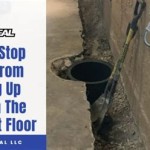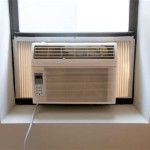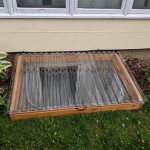How to Seal a Basement Floor: A Comprehensive Guide
Basement floors, typically constructed of concrete, are susceptible to moisture intrusion from the surrounding soil. This moisture can lead to a variety of problems, including mold growth, musty odors, damage to stored items, and even structural issues. Sealing a basement floor is a proactive measure to mitigate these risks, creating a drier, healthier, and more usable space. This article details the process of effectively sealing a basement floor, outlining the necessary steps, materials, and considerations for a successful project.
Before embarking on the sealing process, it's crucial to understand why basement floors are prone to moisture penetration. Concrete is a porous material, meaning it contains tiny pores and capillaries that allow water to wick through. Additionally, hydrostatic pressure, the force exerted by water in the surrounding soil, can push moisture upwards through the concrete slab. This pressure is particularly problematic in areas with high water tables or poor drainage. Existing cracks in the concrete, however small, provide a direct pathway for water to enter the basement.
Choosing the appropriate sealing method is paramount to the longevity and effectiveness of the project. Several options are available, each with its own advantages and disadvantages. The selection should be based on the severity of the moisture problem, the intended use of the basement, and the budget. Common sealing methods include applying a waterproof sealant, an epoxy coating, or a concrete densifier. Each of these options offers a unique approach to preventing moisture penetration from the ground.
Preparation: The Foundation of a Successful Seal
Proper preparation is arguably the most important aspect of sealing a basement floor. A clean, sound surface is essential for the sealant to adhere correctly and provide a durable, long-lasting barrier. Neglecting this step can result in sealant failure, leading to wasted time and money. The preparation process involves several key stages, each designed to ensure optimal conditions for sealant application.
First, the basement floor must be thoroughly cleaned. Sweep or vacuum the entire area to remove loose debris, dust, and dirt. Pay particular attention to corners and edges where debris tends to accumulate. This initial cleaning removes the most obvious surface contaminants and prepares the floor for a more intensive cleaning process. Don't just aim for superficial cleanliness; rather, focus on removing any substance that can hinder the bonding process of the sealant.
Next, scrub the floor with a concrete cleaner or degreaser. These specialized cleaners are designed to remove oil, grease, and other stubborn contaminants that can penetrate the concrete surface. Apply the cleaner according to the manufacturer's instructions, typically involving diluting the cleaner with water and scrubbing the floor with a stiff-bristled brush or a floor scrubber. Allow the cleaner to dwell on the surface for the recommended time before rinsing thoroughly with clean water. Multiple rinses may be necessary to remove all traces of the cleaner.
Examine the floor for cracks and imperfections. These flaws can compromise the integrity of the sealant and allow moisture to bypass the barrier. Small cracks can be filled with a concrete crack filler or patching compound. Follow the product instructions carefully, ensuring the filler is properly mixed and applied. Use a putty knife or trowel to smooth the filler flush with the surrounding surface. For larger cracks or structural damage, consult with a professional contractor. Addressing the initial cracks and imperfections is crucial for a reliable and long-lasting sealant.
Allow the floor to dry completely before proceeding. Moisture trapped beneath the sealant can lead to blistering and delamination, rendering the sealant ineffective. Depending on the humidity and temperature, drying can take several days. Use a dehumidifier to accelerate the drying process if necessary. Ensure the floor is completely dry to the touch before moving on to the next step. Using a moisture meter can help determine the moisture content of the concrete and confirm that it has reached an acceptable level for sealing.
The final step in preparation may involve etching the concrete surface. Etching creates a slightly rough texture that improves the adhesion of the sealant. This can be achieved using a concrete etcher, which is typically an acid-based solution. Follow the manufacturer's instructions carefully, as these solutions can be corrosive. Apply the etcher evenly to the floor, allowing it to dwell for the recommended time. Rinse thoroughly with clean water and allow the floor to dry completely before applying the sealant. Etching is especially important for smooth or polished concrete surfaces where sealant adhesion may be compromised. The added texture assures that the sealant has a strong bond.
Selecting and Applying the Right Sealer
Choosing the right sealer is a critical decision that will impact the long-term performance of the basement floor. Several types of sealers are available, each with its own set of characteristics and suitability for different situations. Selecting the proper sealer ensures that the floor is properly protected against moisture penetration and damage.
Acrylic sealers are a cost-effective option for sealing basement floors. They provide a basic level of moisture resistance and are relatively easy to apply. However, acrylic sealers are not as durable as other options and may require reapplication every few years. They are suitable for basements with mild moisture problems and where budget is a primary concern. For basements with high foot traffic, heavy machinery, or excessive moisture, other sealant might be more appropriate.
Epoxy coatings offer a more durable and waterproof solution for sealing basement floors. Epoxy creates a hard, impervious barrier that resists moisture, chemicals, and abrasion. They are ideal for basements that are used as workshops, garages, or other areas where durability is essential. Epoxy coatings are typically two-part systems that require mixing before application. This means you'll combine a resin and a hardener according to the manufacturer's directions, which starts a chemical reaction creating a resilient coating. They are applied in multiple coats for maximum protection.
Concrete densifiers, also known as silicate-based sealers, penetrate the concrete surface and react with the calcium hydroxide in the concrete to form calcium silicate hydrate. This reaction strengthens and hardens the concrete, making it more resistant to moisture and wear. Concrete densifiers do not form a surface film like acrylic or epoxy sealers. They penetrate the concrete, changing its composition from within and blocking the pores and capillaries. They are a good option for basements with moderate moisture problems and can be used as a primer before applying another type of sealer.
Once the appropriate sealer has been chosen, the application process must be followed carefully. Always read and follow the manufacturer's instructions. Most sealers are applied with a roller or brush. Apply the sealer in thin, even coats, overlapping each stroke to ensure complete coverage. Avoid applying too much sealer in one coat, as this can lead to runs, drips, and uneven drying. Multiple coats may be necessary to achieve the desired level of protection. Allow each coat to dry completely before applying the next.
Ventilation is important during sealer application. Many sealers emit fumes that can be harmful if inhaled. Open windows and doors to provide adequate ventilation or use a respirator to protect yourself. The safety data sheet (SDS) for the chosen sealant will provide specific information on safety precautions and ventilation requirements. It is essential to follow the SDS and the manufacturer's instructions to ensure proper ventilation and a safe working environment. Do not occupy the basement until the sealer has fully cured and the fumes have dissipated. Proper ventilation is crucial.
Post-Sealing Care and Maintenance
After the sealer has been applied and cured, proper care and maintenance can extend its lifespan and ensure its continued effectiveness. Implementing a few simple practices can help protect the sealed basement floor from damage and maintain its waterproof properties.
Regularly clean the sealed floor to remove dirt, dust, and debris. Use a mild detergent and water. Avoid harsh chemicals or abrasive cleaners, as these can damage the sealer. Regular sweeping or vacuuming can help prevent the buildup of dirt and grit, which can scratch or wear down the sealer over time. Cleaning the floor regularly prevents stubborn stains and maintains the floor's appearance, while also taking care of the sealant.
Inspect the floor periodically for cracks or damage. Address any issues promptly to prevent moisture from penetrating the sealer. Small cracks can be repaired with a concrete crack filler. Larger cracks or structural damage should be addressed by a professional contractor. Early detection and repair of any damage can prevent more significant problems from developing and prolong the lifespan of the sealed floor. Cracks can worsen with hydrostatic pressure, increasing moisture penetration and potentially damaging the foundation of the home.
Avoid placing heavy objects or sharp objects directly on the sealed floor. Use mats or padding to protect the surface from scratches and dents. Heavy furniture can cause stress on the sealant, potentially leading to cracks or delamination over time. Placing protective barriers can prevent damage and maintain the integrity of the sealed surface. Taking proactive measures will reduce the wear and tear of the sealant.
Monitor the basement for signs of moisture. Look for damp spots, water stains, or mold growth. If you notice any of these signs, investigate the source of the moisture and take steps to address it. This may involve improving drainage around the foundation, repairing leaks, or using a dehumidifier to reduce humidity levels. Regularly monitoring the basement environment can help prevent moisture problems from developing and protect the effectiveness of the sealed floor.
By following these steps, you can effectively seal a basement floor and create a drier, healthier, and more usable space. Remember to prioritize preparation, choose the right sealer, and maintain the sealed floor properly to ensure its longevity and effectiveness.

Basement Floor Sealer The Best To Use For Floors

Sealing Basement Floors Why It Is Important To Seal Your

What To Know About Waterproofing A Concrete Basement Floor

Paint And Your Waterproofed Basement Floors Tom S Waterproofing Inc

How To Waterproof Your Basement True Value

Diy Basement Waterproofing Sealonce System Easy Installation Waterproof Com

The Complete Basement Waterproofing Guide For Homeowners

How To Prepare Concrete For Sealers And Coatings V Seal Commercial Residential Blog

Basement Floor Sealer Best Concrete Home Flooring Pros

Waterproofing Basement Floor Slabs And Walls Waterproof Magazine
Related Posts







